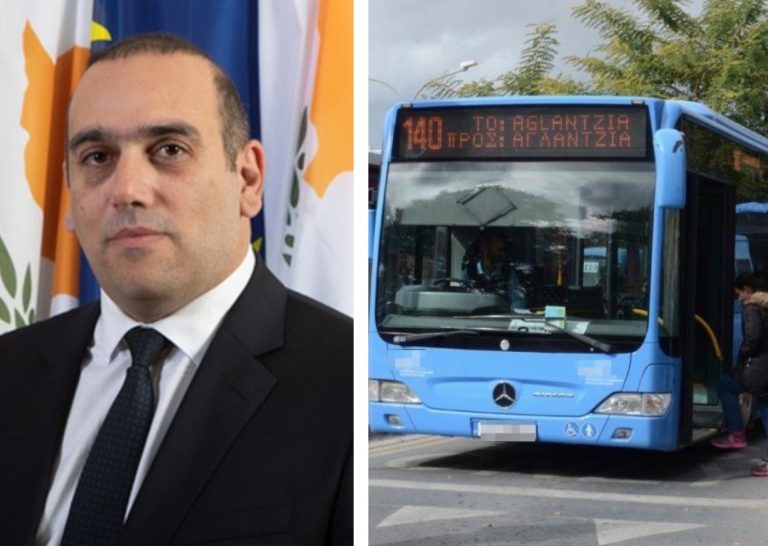Guidelines for the use of public transport are given by the Minister of Transport, Communications and Works Giannis Karousos, pursuant to paragraph 2.3 (p) of the Infectious Diseases (Definition of Measures to Prevent the Spread of the Coronavirus COVID-19) Decree (No. 57) of 2020.
The instructions come into force from 06:00 a.m. on Monday, 14/12/2020 are the following:
- The maximum number of passengers that can be transported by Public Transport - M.D.M. (Regular Passenger Buses with fare per passenger, Buses with E License, Buses used for shuttle services to and from airports (shuttle)), as well as private buses with road license, in all provinces of Cyprus, is defined up to 50% of the capacity of each bus, with the exception of buses for which a special permit is granted by the Ministry of Transport, Communications and Works, which determines a higher percentage of capacity
-The maximum number of students that can carry buses that transport only students, to and from their educational institutions (public and private), in all provinces of Cyprus is set at 50% of the capacity of each bus, with the exception of buses for which are granted a special permit by the Ministry of Transport, Communications and Works, which determines a larger percentage of capacity.
- The maximum number of passengers that can carry buses with a Road Use License for a large family is set at 100% of the capacity of each bus.
- The maximum number of passengers that can be transported by taxis is 50% of the taxi stipulated in the Road Use License. Where 50% is not an integer, the number is rounded to the nearest whole number
- Where in a bus there is no driver's cab and protective membrane separating it from the entrance of the passengers, the seats behind the driver as well as the first seat on the left (driver's seat - where there is one) must remain empty.
- All necessary measures are taken in order to avoid overcrowding during boarding and disembarking.
- At the entrance of each bus there must be a liquid hand antiseptic for use by all passengers.
- Buses must be cleaned and disinfected frequently, definitely before the start of the service and during the day. Cleaning / disinfection should be done at least every four routes and, where possible, cleaning / disinfection should be done at the end of each route. Cleaning / disinfection should be done carefully, especially on frequently touched surfaces such as handles, handles, metal surfaces, seat belts, rails, etc., using disinfectants and materials recommended by the Ministry of Health.
- At each bus stop, at the end of each route and at each break, the bus doors remain open, as well as the windows and skylights if any.
- Buses used for the transport of students must, in addition to the general guidelines for cleaning and disinfection of the buses mentioned above, be disinfected before and after the transport of students.
- Recommended as students, sit daily in a predetermined position, where possible.
-It is also recommended that students who belong to the same department or are brothers sit in adjacent positions.
- The buses do not use air conditioning systems with air recycling and use windows and skylights (open) where they exist.
-The use of face mask by employees and passengers on all regular passenger buses with fare per passenger, as well as on all means of public transport (taxis, tour buses, shuttle services to and from airports (shuttle)) regardless of age, continues to be mandatory in all provinces.
